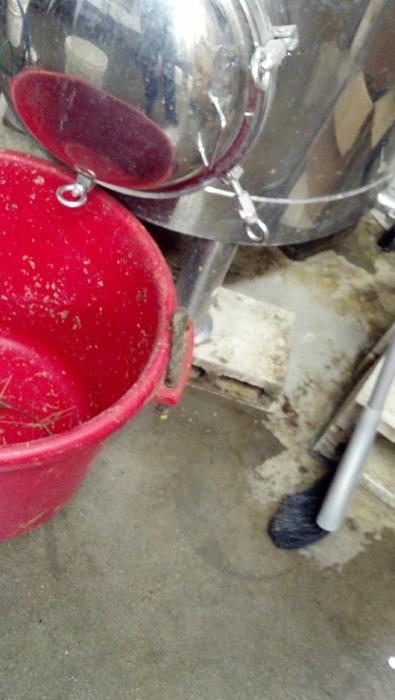We use just standard elements and have no problems with them.
Our cleaning process is simple. We only use PBW (and Starsan). We use it to clean kegs, bottles, the plate chiller, pumps and the conicals.
Our conical are not easy to clean. Our next step is to move to a couple 7 bbl conical but right now we have 7 of the 96 gallon Blichmanns they have two large gaskets which we remove after each batch. We then hit each piece with PBW before reassembling. Like I said its not the best setup but its what we got now. Could we use a CIP process??? We think not as we like to clean and reset the gaskets after each brew.
The MT is just shoveled out and washed out with cold water. When we need to clean the tall piece of the conical we put it in the MT filled with PBW and let it sit for 1 hour, then we run the next piece in usually doing 3-4 at a time. Attached is a picture of our conicals. So every 3-4 brews the MT does get a very good PBW cleaning.
The BK is just drained and washed with a garden hose and a short broom to clean the junk off the elements.
We do not passivate although it may have occurred naturally to some extent. The bottoms and tops of our conicals have been in constant use for 3 years now with no problems. We added the extension pieces 18 months ago and they are still working without problems.
Yes I have watched your build on the CIP car and it looks very nice. As we do not Keg much we just pop the tops off and fill them with PBW. CIP would be nice for cleaning a big conical.
Hops do not give us any problem as 1 we use bags and 2 we have a large plate chiller that can pass most anything. Later in the day or the next day we just drain 1-2 gallons of trub and junk of the bottom of the conical. I would not put hops strait into the BK as it would just make a huge mess. We do not whirlpool as we go straight from the BK to the plate chiller to the conical. (less chance of getting an infection)
Special note: our beers are all naturally carbonated and we do not get crystal clear beer
When we make a batch of PBW we will circulate it through the plate chiller after every brew. The Plate chiller is a great place to get a contamination and buildup of junk so a good cleaning is required.
Evaporation rate. I will have to check but generally we run a full boil for 1 hour for all but the barley wine and it get 1.5 hour boil. With your domed top BK you should be able to speed up the evaporation rate.
Basically we are a huge home brew brewery using all the same methods of a typical home brewer.
What kind of fermentors are you going to use?




















































![Craft A Brew - Safale S-04 Dry Yeast - Fermentis - English Ale Dry Yeast - For English and American Ales and Hard Apple Ciders - Ingredients for Home Brewing - Beer Making Supplies - [1 Pack]](https://m.media-amazon.com/images/I/41fVGNh6JfL._SL500_.jpg)












